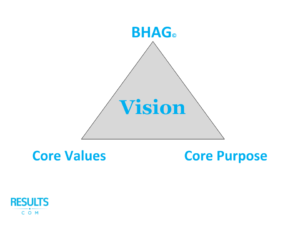The Change Management Tool Kit

Change management as a discipline takes a structured approach to working through organisational transformation to ensure successful implementation and adoption of new ways of doing things. The formal and structured models available can lead us to view change management as something appropriate for enterprise level organisations or major structural restructure. In my experience any change in process, role responsibilities, changes in staff with people joining or leaving a team or implementation of new technologies can be disruptive and lead to uncertainty for people unless handled carefully.
We also know that changes in technology, availability of information and changing attitudes to career development mean that the speed of change increases all the time leaving many of us in some stage of change more often than not.
There are many different change management methodologies and while I would recommend gaining a deeper understanding, it pays for all leaders and managers to have some key tools for approaching change to give their people the best chance of adopting and embracing these changes and ultimately giving everybody the best chance of contributing to the success of the new way of doing things.
Understanding the Change Curve
First developed by Elisabeth Kubler-Ross to describe the process of grief the Kubler-Ross model has been adapted for use in understanding people’s emotional response to organisational change. It is important to note that there are many versions of the model in business publications.
Kubler-Ross’ original stages were denial, anger, bargaining, depression, acceptance and these have been stated on the change curve as;
- Denial
- Anger
- Bargaining
- Overwhelm
- Acceptance
- Commitment
It is important to understand that these are not always experienced in a linear fashion and that your people could be in different stages at any time. There are plenty of resources to understand the psychology behind these stages in detail. Observing your people during times of uncertainty is a skill that will help guide them through the process. Hopefully you know your people well, if they are less vocal than normal and unwilling to participate in discussions they may be in denial, if they seem agitated it is possible they are feeling overwhelmed by everything that is happening.
Introducing the stages of the curve as part of the process can be a way of creating open dialogue, and making it safe for you to check in with a simple, how are you doing? Or where are you today?
Regularly checking in to see how your team are doing can help address red flags early and help people commit and become excited about the bright new future earlier. Smoke out the issues with questions like, “What’s keeping you awake at night?”

Communication
John Kotter’s eight stage model outlined in “Leading Change” is essential reading whether you formally use his model not. Kotter’s opening on communicating the change vision includes the sentence “But the real power of a vision is unleashed only when most of those involved in an enterprise or activity have a common understanding of its goals and direction.”
It is important that Kotter stated “enterprise or activity” affirming that change management isn’t only about the large scale enterprise change. With any process adjustment the more people buy into why it is happening and what is in it for them in the long term
When I work with businesses the process of implementing KPIs can be a process of change for the organisation. Working with leaders on how to communicate the impact of asking better questions, focussing on having robust conversations and driving the actions that will enable everybody to go home at the end of the week knowing they did good work is a huge part of communicating.
I recommend reading Leading Change but from this article I’d like you to take away the perspective that any change of organisational structure or process needs relentless communication and if you bear in mind some of the sub headings below that I have taken from this chapter in Leading Change you will be on the right lines with helping your team adapt
- Keep It simple
- Use Metaphors, Analogies, Examples (as I’d put it, tell stories)
- Use many different forums
- Repeat, Repeat, Repeat
- Walk the talk
- Listen and be listened to.
Guide People Through The Process Of Change
One of the best known methodologies for building a process of change is AKDAR developed by PROSCI and written about by Jeffrey M. Hiatt. The model is based on the principle that people need to achieve certain outcomes for their acceptance of change to become embedded and for their support of the change to be lasting which is required for ultimate success of the new processes. Once a need for change has been identified the ADKAR steps are set out in order as fulfilment of one is a requirement of moving to the other, as such leading people using this methodology has to be a structured approach, the steps are as below.
Awareness of the need for change.
This requires explanation of the internal and external drivers for change and education around the risk of not changing. Enabling people to connect to these drivers individually by understanding what is in it for them will set up their transition to
Desire to support and participate in the change.
Peoples motivators may be intrinsic and individual and willingness to change cannot be forced but education in the nature of the change, the organisational and environmental reasons and understanding people’s individual situation and personal motivators will help guide them through to
Knowledge of how to change.
This step is all about supporting people by providing information about new processes, tools, systems and skills that will be required in order to succeed in the new environment. Once people have knowledge of what is required, they are able to move to
Ability to implement required skills and behaviours.
Once we know where to find the support mechanisms, we can go about acquiring the skills needed to be able to complete the required tasks in the right way. We are able to develop the ability to ‘do the right things, right’
Reinforcement to sustain the change
In my article on successful Software Implementation projects I wrote about how, in my experience reinforcement is the most neglected of these stages. Enabling people to break free from old habits and not allowing the natural tendency to go back to what we are comfortable with is a tough challenge so setting up long term (Keep Going!!!) systems of reward, recognition and celebration for maintaining the new way, as well as occasionally needing to throw in some accountability and admonishment if necessary are critical to sustaining momentum.
Guiding the team using this model is a powerful tool in creating successful change.

Photo by Lindsay Henwood on Unsplash
The Power of Small Wins
Following the progress principle in the term is a great way of generating momentum in any change process. The sooner people become excited the benefits of the new way of doing things the better, brightness of future is a strong motivator so get some wins on the board early and your team will be well on their way.
When I work with clients on developing KPI structures talking about metrics and performance can make people nervous, denial and overwhelm are frequently expressed as part of the process of being open and having difficult conversations. Setting targets that are achievable in the short term allows people to be in the green and helps them get used to winning. Interestingly this can also motivate people to look for ways to do better end stretch themselves as well. Making performance measurement a part of every day work enables frequent identification and removal of blockages fuelling the feeling of progress and helping with acceptance of new processes.
Yesterday I read Jeff Haden’s new book “The Motivation Myth” which gives an excellent account of how breaking large long-term goals down into smaller steps we can celebrate more frequently is how successful people create and build motivation, they don’t start of ultra-motivated by a particular goal. In his introduction Jeff says
“The road to a target, to a goal, or to a finish line is filled with countless hours of work and determination and sacrifice….and countless opportunities to feel good about what you have accomplished, each and every day along the way.”
Embed Change As Part Of Employee Onboarding
Encouraging new employees to be open to change and continuous improvement by making it a critical part of your onboarding process. When employees know from day one that it isn’t just safe, but expected that they to suggest new ideas for improving your speed of learning as a team improves dramatically.
Reading Radical Candor by Kim Smith I was struck by the story of Toyota’s Big Red Square. The story goes that when implementing its famous continuous improvement framework Toyota found many employees reluctant to criticise the way things were done. To address this a big red square was drawn on the production line floor and new employees were expected to stand in the box at the end of their first week and not permitted to leave until they had criticised at least three things.
If you haven’t read Radical Candor (which you should) the Get Stuff Done Model sets up how to create a forum for people to share ideas for improvement from day one embeds change as part of your culture.
The seven steps of the Get Stuff Done Model play out with seven steps for achieving results
- Listen to your team’s ideas about the results your team should be pursuing.
- Help your team clarify their ideas and your understanding of the ideas so that you can help augment your team’s voice.
- Use debate to make ideas more beautiful, to get to the best answer.
- Appoint the person closest to the facts to decide.
- Take time to persuade the rest of the team that the decision made was a good one.
- Give the team time and space to execute with autonomy and purpose.
- After executing, learn from the new context and variables whether the decision was correct, if you executed on the right things. And start again at listen!
Conclusion
There are many methodologies followed by Change Management practitioners and Consultants that have great value but which can be resource heavy to implement, and though I do recommend gaining a deeper understanding of change management, the purpose of this article is to give you some insights into how people adapt to change and some tools to guide your organisation through it. These tools you will serve to help your team through the process of change.
Additional Resources











Recent Comments